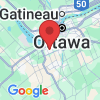
The Ottawa Pest Control Journal
Educational insights into how to keep your Ottawa home or business pest free

Urban Wildlife Management: Coexisting with Spring Visitors
Why Urban Wildlife Management is Essential
Urban wildlife management is not just about controlling populations; it’s about creating a sustainable coexistence that benefits both wildlife and human communities. Here are five key reasons why it is crucial:
1. Ensuring Safety for All:
Minimize Hazards: Properly managing urban wildlife helps reduce the risks of animal-related accidents, which can harm both humans and animals.
Disease Prevention: By controlling wildlife populations and their interactions with human environments, we can lessen the likelihood of disease transmission.
Safety Measures: Implementing safety protocols can prevent dangerous encounters, protecting both residents and animals from potential harm.
2. Protecting Wildlife:
Habitat Preservation: Managing urban environments to support wildlife habitats prevents the displacement of animals due to urban sprawl.
Sustainable Practices: Use of non-invasive management techniques ensures wildlife populations are not harmed unnecessarily.
Biodiversity: Maintaining diverse species within urban areas enriches the ecological fabric of our communities.
3. Preventing Property Damage:
Structural Integrity: Effective wildlife control measures keep animals from causing damage to residential and commercial properties.
Cost Reduction: By averting wildlife-induced damage, property owners can save on potentially expensive repairs.
Long-Term Solutions: Strategic interventions such as proofing buildings against animal entry offer durable solutions to wildlife challenges.
4. Fostering Community Awareness:
Educational Programs: Providing educational resources and programs helps communities understand the importance of wildlife and how to interact with animals safely.
Engagement: Encouraging community involvement in wildlife management fosters a sense of stewardship and responsibility.
Conflict Resolution: Educating the public on how to handle wildlife encounters reduces conflicts and promotes peaceful coexistence.
5. Promoting Healthy Ecosystems:
Ecological Balance: Effective management supports ecological balance by ensuring that urban wildlife populations are healthy and sustainable.
Environmental Impact: Thoughtful wildlife management practices minimize the environmental impact of urban development.
Species Preservation: Protecting urban wildlife contributes to the conservation of species, many of which are beneficial to the environment and essential to ecological diversity.
Humane Control and Coexistence Strategies
Effective management of urban wildlife involves strategies that balance human safety with the ethical treatment of animals. Here’s how Wayne’s Pest Extermination implements humane control and promotes coexistence:
Inspection and Monitoring:
Assessment: Conduct comprehensive inspections to identify the species inhabiting urban areas and understand their habits and behaviors.
Technology Use: Deploy advanced technology for tracking and monitoring wildlife activity, ensuring accurate data collection for better management decisions.
Regular Updates: Maintain continuous surveillance to adapt strategies promptly as wildlife patterns evolve.
Securing Trash and Food Sources:
Reinforced Storage: Upgrade trash bins and compost containers to secure designs that prevent wildlife access.
Pet Food Management: Advise residents on proper storage of pet food, emphasizing the need to keep it indoors or in secure containers.
Public Areas: Implement community-wide initiatives to manage food waste in public spaces, reducing attractants that draw wildlife into populated areas.
Habitat Modification:
Vegetation Control: Manage vegetation around buildings to eliminate bridges that wildlife use to access structures.
Building Fortifications: Seal potential entry points with robust materials to deter animals from entering homes and businesses.
Water Source Management: Modify or remove water sources close to residential areas to discourage wildlife congregation where it’s not desired.
Use of Repellents and Deterrents:
Natural Repellents: Utilize non-toxic, natural repellents to discourage wildlife from settling in undesirable areas.
Humane Deterrents: Install motion-activated sprinklers, ultrasonic devices, and other humane deterrents that discourage rather than harm wildlife.
Custom Solutions: Tailor deterrent strategies to specific wildlife and urban settings to enhance effectiveness without ecological disruption.
Community Education Programs:
Workshops and Seminars: Offer educational programs that inform residents about the ecological roles of urban wildlife and how to coexist safely.
Resource Distribution: Provide resources and guides that help individuals understand and implement coexistence strategies.
Engagement Initiatives: Encourage community involvement in wildlife management planning to foster a collective effort in humane urban wildlife control.
Professional Assistance:
Expert Interventions: Deploy trained professionals to handle complex or dangerous wildlife situations, ensuring humane outcomes.
Ethical Practices: Uphold high standards of ethics in all interventions, prioritizing non-lethal methods and considering the well-being of both wildlife and humans.
Regulatory Compliance: Ensure all actions comply with local wildlife protection laws and guidelines to promote legal and ethical practices.
Building Wildlife-Resistant Infrastructure
Creating environments that naturally deter wildlife from encroaching on human spaces is essential for maintaining harmony between urban developments and natural habitats. Here’s how thoughtful design and strategic infrastructure upgrades can contribute to effective urban wildlife management:
Design Recommendations:
Landscape Choices: Utilize plant species that do not attract wildlife to common areas. For instance, choosing non-fruit-bearing trees can reduce visits from birds and mammals looking for food.
Barrier Implementation: Incorporate natural barriers such as rocks or thorny plants that discourage wildlife from crossing into residential areas. These can be aesthetically pleasing as well as functional.
Water Features: Design water features to be less accessible to wildlife, using steep, smooth surfaces that prevent animals from entering or drinking from them.
Lighting: Strategic placement of lighting can deter nocturnal wildlife. Bright, motion-activated lights make environments less appealing to creatures like raccoons and opossums that prefer to forage under the cover of darkness.
Infrastructure Upgrades:
Structural Modifications: Enhance the integrity of buildings by sealing off potential entry points such as vents, eaves, and gaps under doors. Use materials that are resistant to gnawing or clawing.
Trash Storage Solutions: Upgrade trash storage areas with secure, wildlife-proof containers to prevent animals from foraging for food. This not only minimizes attractants but also reduces mess and potential health risks.
Fencing: Install or upgrade fencing to include underground barriers to prevent burrowing animals like rodents and rabbits from entering protected areas.
Roof and Chimney Guards: Equip roofs and chimneys with guards that prevent birds, squirrels, and other animals from nesting in and damaging these structures.
For more information on urban wildlife management and to learn how you can contribute to these efforts, visit [https://waynespestexterminationottawa.com/ ]. Together, we can foster safer, more harmonious urban landscapes.

Schedule a Pest Inspection
Ready to schedule a pest inspection? Contact us today.
